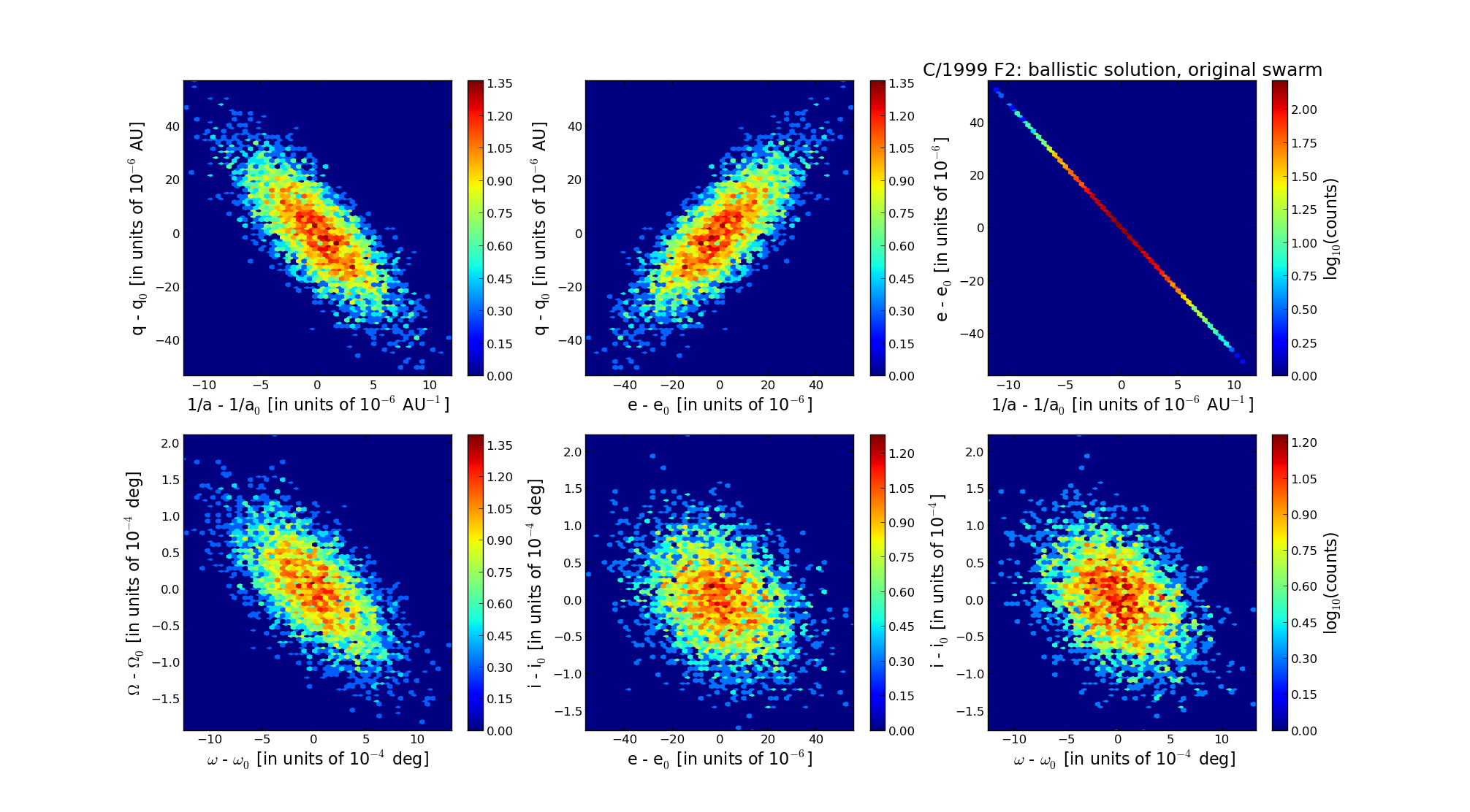| Solar System Dynamics & Planetology Group |
 |
C/1999 F2 Dalcanton |  |
| Solar System Dynamics & Planetology Group |
 |
C/1999 F2 Dalcanton |  |
| number of observations | 148 |
| number of residuals | 293 |
| data interval | 1998 May 15 — 2000 Aug. 29 |
| rms [arcsec] | 0.73 |
| orbit quality class | 1a |
| Epoch (TT) | 19980815.0 | = JD 2451040.5 |
| time of perihelion passage (TT) | 19980823.988272 | ± 0.002572 |
| perihelion distance | 4.71880860 | ± 0.00001514 |
| eccentricity | 0.99863745 | ± 0.00001566 |
| argument of perihelion [deg] | 352.393463 | ± 0.000353 |
| longitude of the ascending node [deg] | 210.295764 | ± 0.000051 |
| inclination [deg] | 56.421004 | ± 0.000049 |
| inverse semimajor axis [10-6 au-1] | 288.75 | ± 3.32 |

| Epoch (TT) | 16930525 | |
| time of perihelion passage (TT) | 19980824.023182 | ± 0.002527 |
| perihelion distance | 4.72811386 | ± 0.00001507 |
| eccentricity | 0.99977816 | ± 0.00001569 |
| argument of perihelion [deg] | 352.298488 | ± 0.000353 |
| longitude of the ascending node [deg] | 210.295378 | ± 0.000052 |
| inclination [deg] | 56.362989 | ± 0.000050 |
| inverse semimajor axis [10-6 au-1] | 46.92 | ± 3.32 |
| Epoch (TT) | 23070617 | |
| time of perihelion passage (TT) | 19980824.046090 | ± 0.002597 |
| perihelion distance | 4.72526742 | ± 0.00001504 |
| eccentricity | 0.99834836 | ± 0.00001569 |
| argument of perihelion [deg] | 352.417408 | ± 0.000351 |
| longitude of the ascending node [deg] | 210.225871 | ± 0.000051 |
| inclination [deg] | 56.402618 | ± 0.000050 |
| inverse semimajor axis [10-6 au-1] | 349.53 | ± 3.32 |